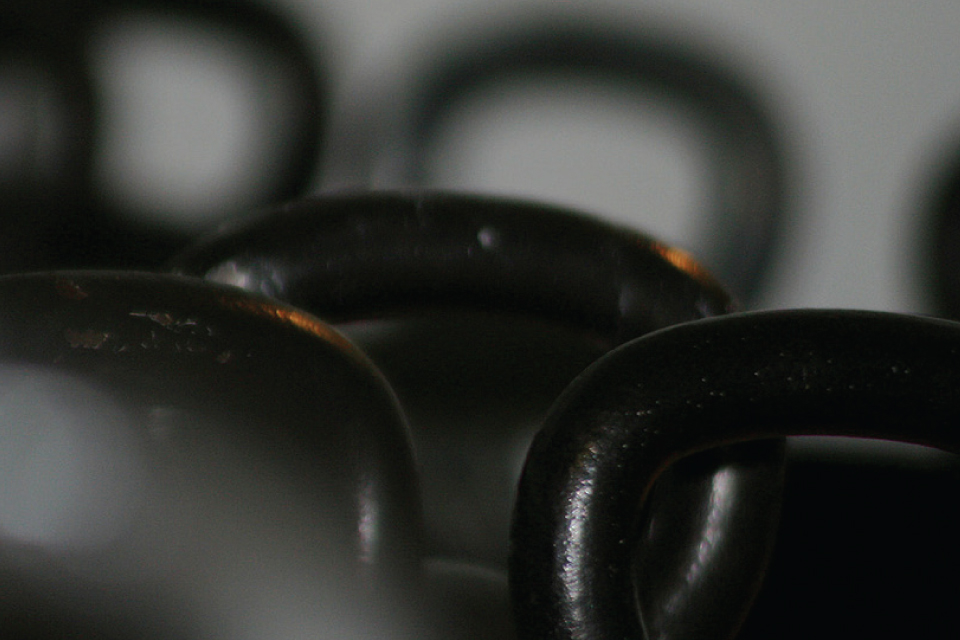Learning the Proper Basics of Kettlebell Training

The kettlebell is a simple and sinister form of weightlifting that involves strength, endurance, coordination, speed, flexibility, and skill. It’s a cyclic tool that develops power endurance. It’s not about doing one rep but as many reps as possible, while also showing proper lockout and fixation in the important moments of specific lifts. With kettlebells invading every fitness gym in America in recent years, there have been many different opinions on how to lift them. The first goal is always proper form and conditioning; the last rep should look just like the first, with no sign of struggle. Whether you are lifting for general fitness or for Kettlebell Sport purposes, you have to always follow the principles of the tool. But, to keep it simple, kettlebell training is about momentum. Remember: The kettlebell is the tool and you are the user. The kettlebell is literally a gym in your hand. You can train with them anywhere, on a sandy beach or in the barracks of a submarine. And, no matter the weight, you can always make a challenge with the pace. But before you get to snatching the 24kg kettlebell 200 times with a one-time hand switch, you must practice the basics. So let’s start.

1. Forming Your Pendulum
What It Is: The Pendulum is the swing. It’s the first step of how you learn to harness the kettlebell’s power. How To Do It: You’re going to use your hips and knees in a rocking chair-type of motion, backward to forward. An easy way to build your basics is to keep your thumb forward during the swing. Don’t tug the kettlebell; let your legs and hips move the momentum of the kettlebell smoothly. On the way down, relax and say “Ahhhh” to help you exhale.
2. Rotation
What It Is: Rotation adds to the kettlebell’s pendulum and can increase your momentum by 80 percent. How To Do It: When the
kettlebell is on the way back, turn your hand inwards. As the swing returns forward, your hand should be palm down and, at the top of the pendulum, the handle is parallel to the floor.

3. Clean Up Your Kettlebell
What It Is: The Clean is a pulling motion that brings the kettlebell to your chest. How To Do It: Back to the basics of the thumb forward during your pendulum; it’s an easy way to get started. As the kettlebell travels up, do a slight pull back, then quickly insert your hand. Once you get the hang of it, you’ll notice a dead point where the kettlebell wants to stop; that’s the moment to insert your hand.

4. Rack It Up
What It Is: The Rack is the first spot you learn to rest the kettlebell. It’s important to build a comfortable rack position. How To Do It: The Clean is the vehicle to bring the kettlebell to the rack position. Here are the keys to the Rack. First, the handle needs to rest on the meaty part of your hand. Second, the ball of the kettlebell is cradled on the V of your arm. Your bicep should be tight against your ribs, and the elbow resting on your hip or as close as possible. Third, the legs are locked and hips forward. Stand strong.

5. Push Press (with fixation)
What It Is: A Push Press is a way to get the kettlebell locked-out above your head. You want to use half legs and half arm. How To Do It: To start the Push Press, it’s important to bend at your knees and not at your hips. Now, straighten your legs while simultaneously pressing the kettlebell up over your head. It’s important to show control of momentum, so the kettlebell can’t be wobbling; this is “fixation.” On the return down, relax and let the elbow come back to your hip. Straighten your legs and rest for a moment in the rack position before the start of your next rep.
Kettlebell Workout
I was going to write a conclusion here but instead, I’m going to give you a workout. Grab a kettlebell in a weight that you feel confident with and focus on the important moments of the basics. Day 1: 5-10 minute warm-up of your choice A. 3 sets of 30 Swings – 15 left, 15 right (rest 60 seconds between sets) B. 3 sets of 20 Cleans – 10 left, 10 right (rest 60 seconds between sets) C. 3 sets of racking the kettlebell and doing squats – 10 left, 10 right D. 3 sets of body-weight jump squats – 30 seconds work and 30 seconds rest E. 5-10 minute cool-down with stretching Day 2: 5-10 minute warm-up of your choice A. 2 sets of 40 Swings – 20 left, 20 right (rest 60 seconds between sets) B. 3 sets of 20 Push Presses – 10 left, 10 right (rest 60 second between sets) C. Superset – 3 sets 1. 10 curls with the kettlebell – use two hands and grab it by the horns 2. 10 diamond-style push-ups with the kettlebell lying on the ground, hands on the ball of the kettlebell (rest 60 seconds between each set) D. 3 sets of body-weight V-ups – 30 seconds work and 30 seconds rest E. 1-mile jog Day 3: 5-10 minute warm-up of your choice A. 1 set of 60 Swings – 30 left, 30 right B. 3 sets of 20 Cleans and Push Presses – 10 left, 10 right (rest 2 minutes between sets) C. Circuit – 3 sets 1. 5 – 10 pull-ups or 10 – 15 body-weight rows 2. 10 – 15 burpees 3. 20 – 30 feet on bench sit-ups E. Congratulate yourself with a hearty bowl of borscht soup (it’s healthy); you’ve just created momentum in your kettlebell training







